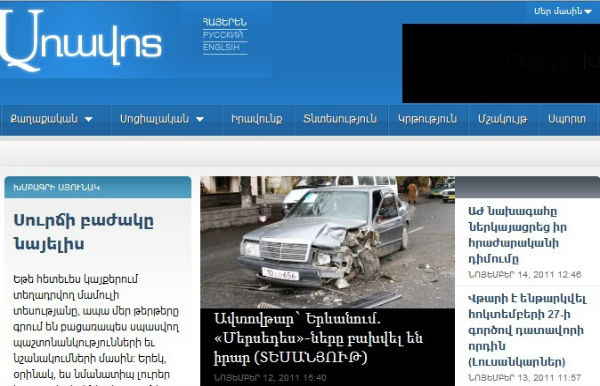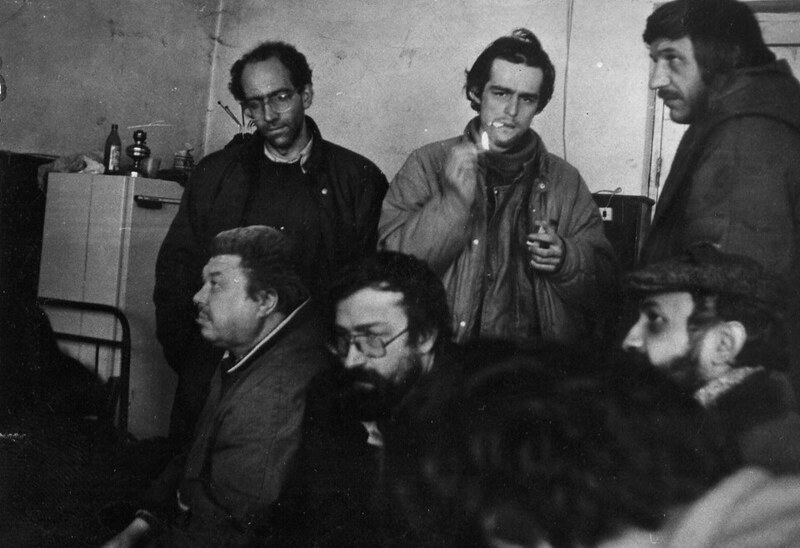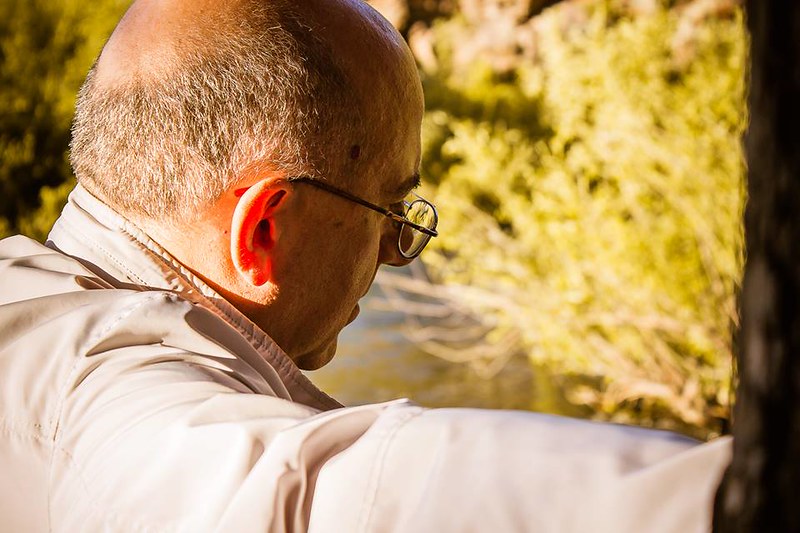
Media.am continues its interviews with chief editors of local newspapers on the problems and survival prospects of the print media in Armenia.
At the end of the series, the overall trends will be summarized.
Our interviewee is Aravot chief editor Aram Abrahamyan.
“I can predict for 2-3 years. As for what will happen in 10 years, God only knows.”
Aravot daily paper
Published since 1994.
Circulation: about 2,000
Printing: black and white, 8 pages.
Price: 200 AMD (about $0.41 USD)
Revenue sources: advertising, newsstand and subscription sales, sponsors.
Online version: since 1998.
There was a time when physically attacking journalists and media outlets was “acceptable,” then these became more “subtle” — unseen, invisible… financial…
Also, judicial…
If we look at it from the perspective of the ruling authorities, which method is more effective in terms of control?
Depends on the government. For the second president, the methods of physical force were paramount, since he was more explosive, more aggressive, vindictive, resolute toward not only newspapers, but also civil society and the political opposition. The third president is more restrained, makes compromises, is more tolerant. I wouldn’t say the state of the media is great, but the methods are moderate.
Interestingly, I asked about the ruling authorities, [but] you spoke about the presidents. In other words, can we conclude that the fate of the media in Armenia is in the hands of the presidents?
Yes. Until all the constitutional changes are in force.

Then in whose hands will it be?
Let’s wait a year and we’ll see.
By the way, you spoke only about two presidents. Is it a matter of principle to be silent about the first, since you were his spokesperson? There were pressure and physical attacks on journalists and media outlets during his term too.
Yes, there were acts of violence during his time too.
Encompassing the period of all three presidents, which method is more effective for the ruling authorities, to keep media outlets “on a tight leash”?
The latter is more effective.
I periodically asked you 10–15 years ago (for the purpose of publishing) who funds Aravot and always [received] the same answer: they’re wrong, it’s not Vache Manukyan. That’s it? I’m no longer naive to ask such a thing, especially when I see that all the editors don’t like speaking about this specifically. [So] I will ask, why?
We don’t want to say probably because we don’t want the newspapers to be tied to the names of those people and every single word in the paper willingly or unwilling to be interpreted as something they commissioned.

The fact is that there are financial sponsors.
Of course there are, and in Aravot‘s case, there are several. And this diversification allows [us] not to be dependent on any one person, so that if anyone expresses some biased grievance or another, we can turn them away.
Doesn’t having a sponsor spoil the paper as a business entity, make it lazy in exerting efforts to attract readers?
No. Efforts to attract readers, all the same, are exerted because the bigger the circulation, the more revenue we’ll have. Of course, it would be ideal if there was free business [market] in Armenia. Not only in the newspaper, but also any other [business]. But in Armenia there is generally no free business — beginning from the smallest kiosk, which is forced to commit violations in order to survive, and so, also to enter into certain unlawful relationships with state agencies. Beginning from the kiosk and ending with the largest factory. And so too the newspaper.
Does that cause you [any] pain?
It pains me, yes. But I think that, nevertheless, even within these rules of the game, it’s better to say something than say nothing.
Azg chief editor Hakob Avedikian told us that if the information sector in Armenia had been in the real business sector, a great many would’ve gone bankrupt. Would the print version of Aravot be among those “great many”?
Yes, of course. All would’ve gone bankrupt. Not a “great many,” but all.
No exceptions?
Perhaps in the past I would’ve named a few non-political papers. But now, I can’t speak about even them.

On newspaper editors not uniting around serious problems, Hraparak chief editor Armine Ohanyan said, “Now I can’t convince, for example, the editors of Zhamanak or Aravot, who made a choice in favor of the internet…”
If there are problems around which we can unite and negotiate, I am always in favor.
But, indeed, one gets the impression that the online is the focus of attention, while the print paper is left to the inertia of survival.
No, to be honest, I wouldn’t say that. In Aravot’s case, the print version is more profitable: the newspaper brings in probably about 70% of our revenue. And that’s why it won’t be shut down.
Is the main part of that profit from the support of sponsors?
Of course not. About 60% of the profit is from sales (including subscription). The rest, from advertising.
Is an ad more expensive in the newspaper or in the online version?
It’s more expensive in the paper. As for why, you have to ask the advertisers. It’s not only local [political] figures who want to disseminate their portrait in print. Major international brands operating in Armenia also prefer advertising in the paper.
For whom is Aravot printed? Who are those 2,000 consumers?
Mainly the paper’s subscribers: state departments, different offices, news outlets, embassies, and so on.
So subscription sales are greater than newsstand sales? That’s uncommon.
Yes. Decision-makers in various sectors apparently are interested in Aravot‘s approaches, various commentaries, interviews, and so on (well, the news, of course, they read online).

Do you go knocking on doors for subscriptions, or even single issue sales?
Yes. For single issue sales, I can’t imagine how it can be done. But for subscriptions, our director every November contacts various state agencies, regional administrations (marzpetaran), village mayor offices, offers to collaborate; in the case of many subscriptions, perhaps some discounts. If you can imagine, it yields results.
And will newspapers disappear one day?
Newspapers won’t disappear completely (100%) in the world — and in Armenia likewise.
In the world, it seems, they won’t disappear. There are “survivors” from the initial battles with the internet.
Some. For example, The New York Times continues to be leading [newspaper]. In America, there’s a certain culture. My nephew lives in a major US city. There, people both read newspapers at work and subscribe to them: you open the door and find The New York Times inside their homes.
And why don’t you have Aravot inside homes?
If individuals subscribe, we will. [But] they don’t subscribe.
But all the same, the newspaper ultimately won’t disappear in either Armenia or the world, just as horses haven’t disappeared. That is, we don’t go anywhere by horse, but people sometimes ride horses for fun.
That’s the same as the newspaper is not read but printed [anyway] — perhaps sometimes skimming it for fun.
If there will be a hippodrome for my horses, I will keep horses. And the paper, yes, if it doesn’t bring in revenue, doesn’t bring in a large part of the revenue, printing a newspaper will become pointless for me.
How long will Aravot, in particular, last?
I can’t say that. Just as the weather is predicted for five days, I can predict 2–3 years for the newspaper. As for what will happen in 10 years, God only knows.
In 168 Zham chief editor Garnik Gevorgyan’s opinion, newspapers in Armenia will gradually begin to shut down after the parliamentary elections in 2017.
But what’s so shocking about the parliamentary election that newspaper will begin to close after that? Newspaper are published, in any case, not only for election campaigning.
Once upon a time you said that the elections are the finest hour for media outlets.
That was once upon a time.
Interview by Ruzanna Khachatrian

Add new comment
Comments by Media.am readers become public after moderation. We urge our readers not to leave anonymous comments. It’s always nice to know with whom one is speaking.
We do not publish comments that contain profanities, non-normative lexicon, personal attacks or threats. We do not publish comments that spread hate.